Your home-buying experience should be an exciting time, yet the process ahead is not without its drawbacks and potential problems. For many home-buyers, failing to do enough research at the beginning of the process can lead to problems down the road, and in real estate those problems can be costly.
Here is a closer look at all of the aspects of buying a home for the first time, including the good, the bad and the ugly.
Step 1: Choosing an Agent
The first step in buying a home is choosing a real estate agent to work with. This can be a good part of the process, or it can be ugly, so do your homework. Choose an agent who will actively work for your best interests. Find an agent who will take the time to get to know you and your goals for your home, one who is familiar with the area you want to purchase in, and is a person you are comfortable interacting with on a regular basis.
Conflict of interests can be a serious problem for home-buyers. Some buyers choose to work with a buyer’s agent only. A buyer’s agent is one who does not list properties for sale, but only works with home buyers. This prevents a conflict when the agent is tempted to steer the buyer towards listings that they manage, which can earn the agent a higher overall commission. That said, using an agent who only works with buyers is not necessary, as the right real estate agent will keep your best interests in mind at all times, regardless of their own interests.
Step 2: Mortgage Financing Pre-Approval
Financing is not the most glamorous part of the home buying process, but it is important. You need to know how much you are able to spend on your home, and that only comes through getting actual approval from the lender. Also, a pre-approval letter will give you better negotiating opportunities when you do find a home you love because the seller will see you as a serious buyer who is ready to go.
Step 3: Finding the Right Home (and Neighborhood)
When you’re buying a home, one of the most exciting parts of the process is shopping around. You will get the chance to visit homes, scour neighborhoods, and find the one that is the perfect fit. As you enter this process, have a list of things that you do and do not want in a home, but remember that you may not find a home that has everything on your “want” list. Prioritize your needs so you can be certain you find the features that you must have, and be willing to be flexible on the other items.
As you shop, make sure you pay attention not only to the home, but also to the neighborhood. A beautiful home in a dangerous or inconvenient neighborhood is not going to be something you will enjoy in the long-term. Choose a home that is in a neighborhood that meets your needs for location and overall vibe.
Step 4: Making an Offer
You’ve found a home you love! Now it’s time to make an offer. One of the more difficult parts of this step is this – you do not have any guarantee that your offer will be accepted. Often, offers generate negotiations back and forth between the buyer and seller until a mutually beneficial decision is reached. This means you need to be careful that you don’t get emotionally invested in the home, and that is not easy to do! Continue maintaining emotional distance from the home while you negotiate your offer.
When making an offer on a new home, make sure you consider adding any needed home-buying contingencies. These are circumstances that have to be fulfilled in order for the offer to be binding.
For example, you may make your offer contingent on the results of the inspection. This is a protection for you, because it gives you a way out of the offer if the inspection finds a serious problem. Anything you want the seller to do can be a contingency, but just remember the fewer contingencies you have, the more attractive your offer will be.
Step 5: Inspection and Appraisal
After your offer has been accepted, you need to have the home inspected and appraised. An inspection allows your chosen home inspector to check the home from top to bottom for signs of hidden problems or building code violations that you may need to address before buying it. An appraisal, required by most lenders, checks the house to ensure it is worth what you are agreeing to pay. These are both areas where the home-buying process can turn sour.
If the inspection finds a serious issue or the appraisal finds that the home is not worth the agreed upon sales price, you will need to go back to the drawing board to either renegotiate the price or start the home shopping process over from scratch.
Step 6: The Final Paperwork for Buying a Home
At this point, you need to finalize your financing and get home-owner's insurance for the property. Find out from your lender what steps you need to take to officially apply for the mortgage, then shop for home-owner’s insurance, which your lender will require. Make sure all of this is in place well before the closing, so you don’t face unwanted delays.
Step 7: The Closing
Closings get a bad reputation in real estate, but when you are the buyer, closing day is actually quite exciting! This is the day when you get to sign the paperwork for your home loan and the home itself. It will also be the time when you pay your down payment and any closing costs you are responsible for.
In most areas, you will need to budget 2 to 7 percent of the home’s price for closing costs. While paying that large amount isn’t always fun, at the end of the process, you get the keys to your new home and are ready to move in!
Watch out for These Ugly Mistakes
Along the way, no matter how careful you are, you face the potential of making serious mistakes that could put your financial future in jeopardy. Make sure you are as diligent as possible to avoid them.
One mistake often made by first-time home buyers is skimping on the inspection. Do not hire the cheapest inspector just to get this process out of the way affordably. You want an inspector who will go over the home with a fine-toothed comb, because any problems overlooked in the process will become your problems as soon as you sign on the dotted line.
Another common mistake is failing to shop around for a home loan. You need to look at every option available to you in order to make the right choice for your mortgage. Because a home loan is a long-term financial commitment, it is critical that you know you have the best one for your financial situation.
Buying a home is a process with many potential pitfalls. But by using this guide, you will be well-prepared for the process ahead, and can enter it with confidence knowing you are ready.
For more time and money-saving tips on buying a home, review our complete homebuying checklist “10 Steps to Buying a House in the Carolinas!”








